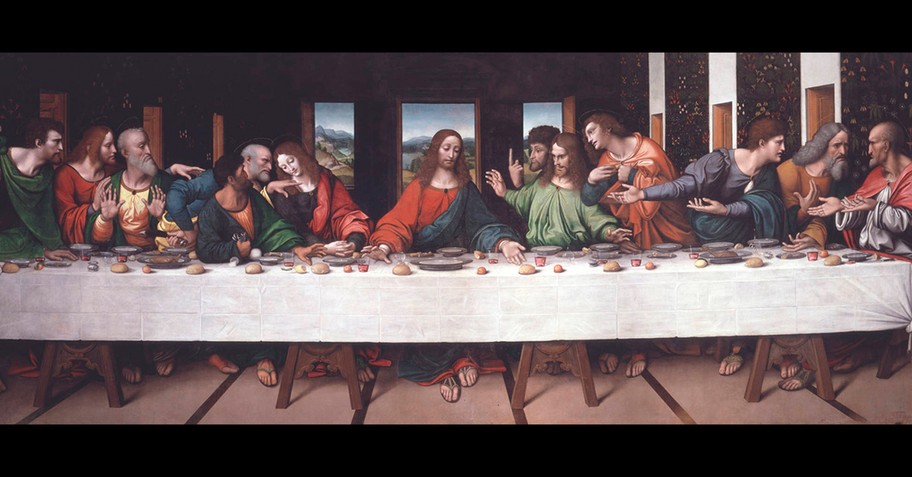On a Quest for the Truth of the Holy Grail

Pop culture is rich with Holy Grail references. Despite its strong ties to Christianity, the grail has remained an object of legend. But whether you associate it more with “Monty Python” or “Indiana Jones,” almost everyone has heard of the sacred cup.
As the legend goes, the Holy Grail was used in two significant instances of Jesus’ life: He drank out of it at the Last Supper, and later Joseph of Arimathea used it to collect the Savior’s blood on the cross. Mythology ascribes all sorts of miraculous events to those who find – and use – the grail. But is any of this true? Let’s take a look at where we see a potential “holy grail” in Scripture, and see if we can separate fact from fiction.
Photo credit: ©Getty Images/Maura Galliano

Is the Holy Grail Real?
Kind of?
The Last Supper is recorded in Matthew 26, Mark 14, and Luke 22. All three of these passages specifically mention Jesus using a cup:
“Then he took a cup, and when he had given thanks, he gave it to them, saying, ‘Drink from it, all of you. This is my blood of the covenant, which is poured out for many for the forgiveness of sins. I tell you, I will not drink from this fruit of the vine from now on until that day when I drink it new with you in my Father’s kingdom’” (Matthew 26:27-29).
This is not surprising, considering they are sharing a meal. Jesus is using this cup to mark the first Communion, but there’s no more power in this cup than there is in the Tupperware I put my leftovers in this afternoon – aside from the fact that this cup is being held by God incarnate. Would it be fascinating to see this same cup with our own eyes? Sure, and as Indiana Jones would surely remind us, it would belong in a museum! But the cup itself had no divine power.
But what about the second claim, that Joseph of Arimathea collected Jesus’ blood in this same vessel? In none of the Gospels is there any mention of this. In fact, we don’t even see Joseph arrive on the scene until Jesus is already dead (though presumably, he would have been at or near the cross to know when Jesus had died.)
Luke, in chapter 23, describes Joseph of Arimathea as “a good and upright man who had not consented to their decision and action [to kill Jesus].” After the Savior is dead, he asks Pilate for His body, which he wraps and places in his own tomb. If Joseph had any desire to steal some of Jesus’ precious blood, he would have had plenty of time to do it. But Scripture makes no mention of this, meaning it is purely conjecture.
Furthermore, Joseph is never mentioned at the Last Supper. If we assume that the same cup Jesus used earlier was the one Joseph used to collect His blood, then either Joseph snuck in after the disciples left and stole it, or he had someone pass it to him. Both are extremely unlikely, and not found anywhere in Scripture.
Thus we can conclude that while there was an important cup that Jesus used at the Last Supper, it did not have any supernatural power, and most likely remained in the upper room. So factually, there isn’t much to the Holy Grail. But that doesn’t mean we should toss out all study of this myth.
Photo credit: Leonardo Da Vinci/Public Domain Image

Where Did This Myth Come from and What’s It All About?
While the biblical reality of the Holy Grail is dubious at best, the mythology surrounding it is rich.
Personally, I think it’s fascinating to hear myths and legends from all over the world. It’s a fun way to learn more about the cultures they were born out of. And while there is Jewish and Hindu mythology, there isn’t a lot of Christian mythology; we don’t separate anything from Scripture and turn it to myth, because the Bible is the Holy Word of God. To add to it for storytelling would be wrong.
Except for the Holy Grail. For some reason, that’s one piece of “Christian mythology” that caught hold of our culture, and we just can’t shake it. Personally, I don’t think there’s anything wrong with this story, any more than there’s a problem with other fairy tales. As long as we don’t try to ascribe biblical power or truth to these tales, they are all in good fun, and can even teach us some things (which I will get into below). But first, let’s take a look at the grail myth:
According to History.com, “The quest for the Holy Grail first made its way into written text in Chrétien de Troyes’s Old French unfinished romance, the Conte del Graal (‘Story of the Grail’), or Perceval, which was written around 1180.”
Some stories of the Holy Grail say that after Jesus’ resurrection, Joseph of Arimathea was thrown into prison, likely as a suspect in Christ’s “escape.” In his podcast, Jason Weiser explains that in this particular myth, the resurrected Jesus visits Joseph in prison, and gives him the grail. Now filled with confidence that his Savior is looking out for him, Joseph is ready to patiently wait out his jail sentence. But he has quite a long sentence ahead of him – no one comes to check on the prisoner for 43 years. Joseph, already an old man when he was imprisoned, has lived beyond his years thanks to the power of the grail. (There’s much more to this story, and if you have any interest in mythology or a well-told tale, I’d encourage you to check out the link above.)
Of course, the most popular myth of the Holy Grail involves King Arthur and his knights going on quests to retrieve it. Myth Encyclopedia writes this of the Arthurian myths: “To the knights who sat around King Arthur's Round Table, seeing the Holy Grail was the highest and most noble goal. They roamed the nation in search of it. Lancelot nearly achieved the quest, but the sin of his love for Guinevere, Arthur's queen, kept him from seeing the Grail. A knight named Perceval (or Parsifal) saw the Grail but did not understand what it was. Only Galahad, Lancelot's son, was pure enough to see it with full understanding of its meaning.”
Modern stories like “Indiana Jones and the Last Crusade” still include hunts for this mythical artifact. But, regarding its authenticity, History.com explains that “there are roughly 200 alleged Grail cups in various locations around the world, and many scholars question whether the Holy Grail ever existed at all or is merely a legend.” So if you’re considering going on your own noble quest for the grail, it may be time to rethink that goal.
Photo credit: ©Getty Images/kevron 2001

Why Bother Studying Mythology?
Putting “Christianity” and “mythology” in the same sentence ruffles our feathers, and on the one hand, I understand. In a time when people are quick to dismiss Scriptural truths like the Garden of Eden, the Flood, and Jesus’ death and resurrection, we don’t want to suggest that any of these things could be mythical. But on the other hand, consider this: we still have fantasy stories built around Christian themes. The much-beloved "Chronicles of Narnia" books are a prime example.
Storytelling is so important for us – for entertainment, but also to make hard concepts easier to understand. Jesus knew this, and it’s why He used parables to teach His lessons to the disciples (and us).
So as long as we approach stories like the Holy Grail with the right mindset, and without trying to twist it to fit within the cannon of Scripture, I believe there is much to be learned from these tales. Where did they come from? Why were they so popular? Who was telling them, and for what purpose?
The Holy Grail story was created by medieval storytellers, when Christianity was the law of the day. And in some of these myths that I listed above, we see the ways the storyteller was trying to convey truths about who God is.
In the myth of Joseph of Arimathea, we see Jesus visiting him in prison, which reminds us of Jesus’ command to care for those in need (Matthew 25:35-40). This story also shows how Jesus cares for His followers, and has incredible power over our lives (though perhaps not in the form of a magical, life-giving cup.)
In the Arthurian legends of the grail, we see a reverence for this artifact that encourages reverence for Christ. Only the purest of Arthur’s knights is able to gain access to the cup, which may be a symbol for Christ Himself. Just as Galahad had to be without sin to find the grail, so we must be without sin to gain access to the Kingdom of Heaven. The message to medieval listeners was obvious: don’t stray into sin, and you will be richly rewarded.
Even “Last Crusade” reminds us of one important fact (and this is a spoiler, if you haven’t seen the movie yet.) When Indiana Jones must choose the Holy Grail from a table full of golden goblets, he picks up the simple wooden cup, noting “that’s the cup of a carpenter.” Indiana knows that Jesus was a common man.
Photo credit: ©Getty Images/Tomertu

A Holy Reverence
None of these messages encompass the richness and power of the Gospel, nor should they. While it’s good to find Scripture connections in fiction, the whole, complete, true story can only be found in the pages of the Bible. However, these stories can remind us of important truths about Jesus’ life on earth, and encourage us to seek Him.
Stories aren’t usually just stories. In legends and myths from around the world, we learn what makes that culture unique. What was important to them, what did they worship, how did they view life after death, and what made life worth living? Even in the mythology of the Holy Grail, we can see important aspects of our faith, and are reminded that while Jesus was a simple man like all of us, He is also powerful, and must be approached with due reverence.
More from this author
What Is a Biblically Accurate Angel?
8 Verses for When Your Patience Is Wearing Thin
5 Prayers for When Everything Is Going… Right
Photo credit: ©Getty Images/GordonImages
Originally published May 02, 2022.








